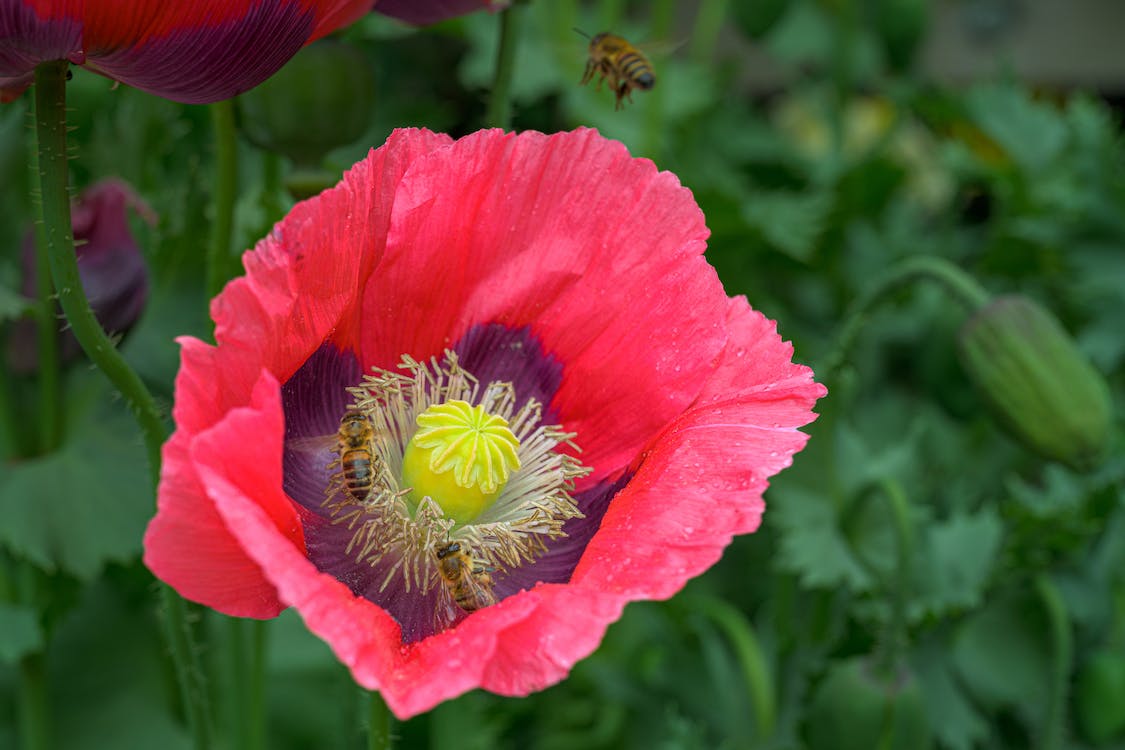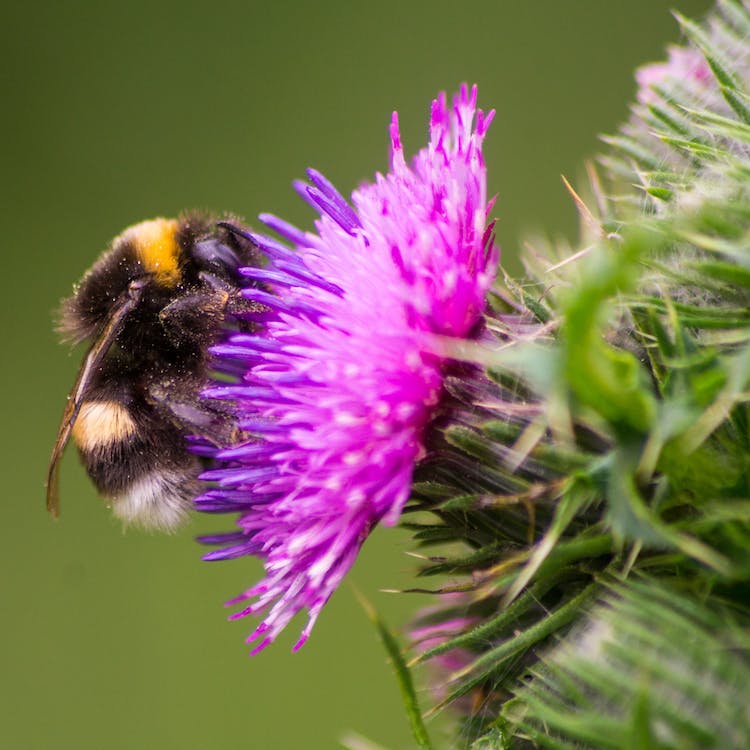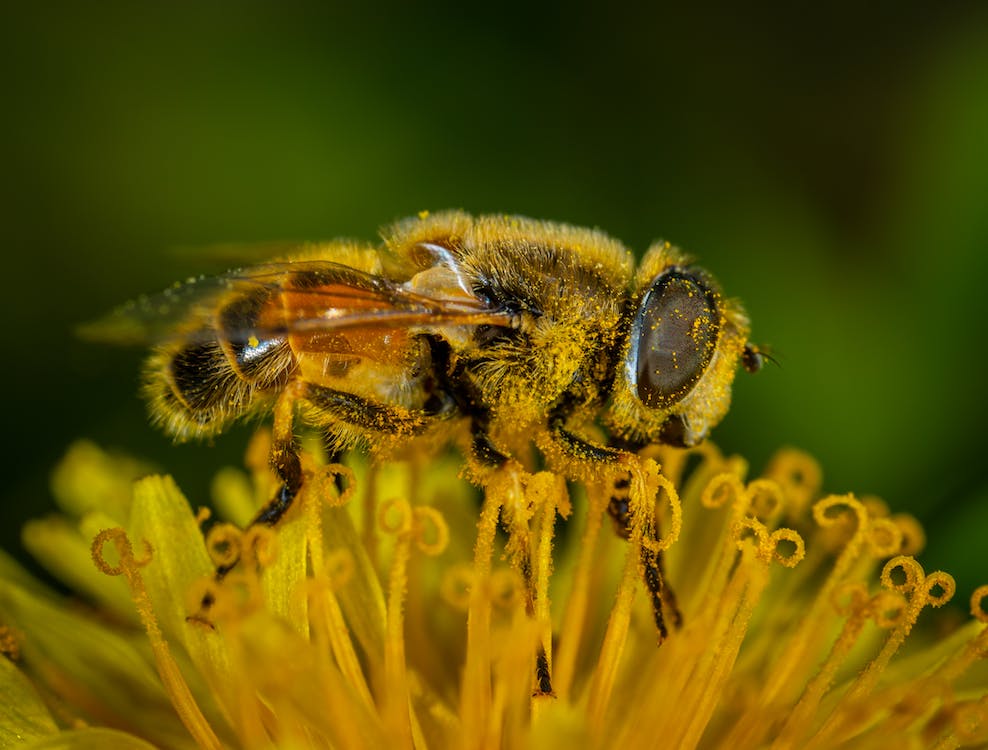How Do Bees Collect Pollen?
Honey bees are natural pollinators, carrying pollen from plant to plant as they go about their day. While this immensely benefits the environment, it’s also crucial to the colony’s productivity and success.
Pollen serves as a vital sustenance source for honey bee colonies, particularly nurturing the growth of young larvae. Considering pollen is indispensable to the existence and lifecycle of honey bees, they have developed efficient methods to gather and transport it.
Let’s dive into how honey bees collect pollen!
Why Do Bees Collect Pollen?
Bees are considered the single most important pollinator species on the planet. But before they perform their role in the ecosystem, they collect pollen primarily for their benefit.
Bees collect nectar and pollen simply because those are their primary food source. Bees have more or less the same nutritional requirements as humans. They need proteins, carbohydrates, minerals, fats, vitamins, and water to survive.
For any bee colony to survive, they forage for nectar, pollen, and water. The nectar provides worker bees with energy, while the pollen supplies their tiny bodies with essential protein and nutrients to thrive. Pollen is also what they feed to the larvae within the colony.
Bees get all the nectar and pollen particles they need from flowers. The nectar they process turns into honey. Bees consume their own honey and store any excess in the honeycomb to ensure the whole hive has sufficient food source throughout the winter.
Carrying pollen from one flower to another, their fur becomes a vehicle for this transfer. This pollen travels with the bee and brushes off on the next flower, allowing the plants to pollinate. This is how bees pollinate flowers even when they don’t forage for pollen.
Bees can fly as far as 8 miles from their home hive, carrying pollen from plant to plant over long distances. However, if foraging for nectar and pollen, they usually limit their interests within a 2 mile distance.

How Do Bees Collect Pollen?
We know bees carry pollen between flowers, but how do honey bees collect nectar and pollen for the hive?
There are many different ways to collect pollen. How bees collect their pollen depends on what type of bee they are.
Some bee species collect the pollen on their fuzzy bodies and carry it back to the honeycomb on their hind legs. Others hold the collected pollen on their abdomens.
Let’s get to know the different ways bees collect and carry pollen.
Bees Transport Pollen on Their Hind Legs
As bees fly through the air, their fuzzy bodies become positively charged with static electricity. The moment they land on a flower, the pollen gets knocked off the antlers and sticks to the positively charged bodies of the bees.
As a result, the bees become covered with pollen, sometimes even on their hairy eyes. The bees then wipe the pollen off their body using their hind or back legs. The stiff hairs found on a bee’s abdomen are called scopa, but the ones on the hind legs are called corbiculae or pollen baskets.
All honey bees collect pollen in this manner.
Bees Collect Pollen on Their Abdomen
The Megachilidae family, including leafcutter bees, mason bees, resin, and carder bees, all carry and transport pollen using the long scopal hairs on their abdomen.
Bees in the genus Hylaeus collect pollen in their crops or modified stomachs, also called honey sacks.
As a bee collects nectar and pollen from flower to flower, pollen pellets from one flower inevitably get transferred to another. This aids the process of pollination, which is essential for the survival of life on the planet.
But bees don’t just collect pollen to pollinate plants. They collect pollen to bring back to the hive.
The process starts much the same. As a honey bee flies between flowers, pollen sticks to the hairs on its body. This time, instead of letting the pollen transfer to the next flower it visits, the bee uses its legs to brush the pollen toward its hind legs.
Here, stiff hairs called corbiculae, or pollen baskets, collect and hold the pollen. When these pollen baskets are full, the bee returns to the hive, storing pollen for larvae to eat later. They then leave the hive again for another trip.

Do All Bees Collect Pollen?
Not all bee species do pollen collection. Some, like cuckoo bees, lack the physical characteristics that help other bee species forage and carry pollen.
Instead, these bees raid pollen-collecting bee colonies and deposit their eggs onto these nests. Once merged, the cuckoo bees eat the food stores in the host’s colony, sometimes killing off their hosts in the process.
How Much Pollen Do Bees Collect?
Every bee species, including native bees and wild bees, varies in how much pollen it can collect and carry.
An average-sized honey bee colony can collect up to 40 pounds of pollen and 265 pounds of nectar annually.
Collecting pollen generally takes up 15% to 30% of the time of the colony’s forager population. A single honey bee alone can carry pollen up to 35% of its body weight.
Like honey, bee colonies often have excess pollen that beekeepers can collect. Individuals can sell bee pollen and use it as a health supplement, making it just one of the ways beekeepers can make money from their hives.

Do Bees Choose Their Flowers?
While other species of pollinators stick to a specific plant species or family, honey bees are less picky. They are polylectic pollinators, meaning they’ll visit a wide variety of flower types and colors when gathering resources.
They also choose pollen based on its odor and physical characteristics rather than its nutritional value. This means that they seek out the most attractive flowers in the area. And they collect quite a lot!
The flowers have evolved their own signals to attract pollinating insects and encourage them to return. These flowering plants may produce certain fragrances or make their petals more colorful to make them more appealing to the bees.
It’s still unclear whether bees can gauge the nutritional content of the nectar they collect. Since most of the nectar that a bee collects ends up in the hive rather than being eaten on the spot, there’s still no hard scientific evidence on how the bees evaluate their nutritional value.
However, a bee’s overall choice of pollen depends on a wide variety of multisensory factors and not just the characteristics of the pollen itself. Bees show that they can learn from their previous experiences, which are a big part of their foraging choices. They also depend on information the rest of the colony relayed to find excellent nectar and pollen-extracting locations.
What Happens to the Pollen Bees Collect?
After successfully harvesting, bees carry pollen back to the hive and add some enzymes and acids to avoid spreading bacteria and other harmful microorganisms. The pollen is then prepared for long-term storage.
Pollen mixed with nectar or honey and bee saliva is called bee bread or ambrosia. This bee bread serves as the food for the worker bees and larvae.

Can Humans Eat Bee Bread?
The short answer is yes. In fact, bee bread is often called ambrosia or “food of the gods” for many reasons.
Bee bread is a great source of vitamins K, A, B1, B2, B3, B6, B12, C, E, and D. They are also rich in protein, nutrients, and minerals, such as potassium, calcium, phosphorus, zinc, and magnesium.
Bee bread provides loads of health benefits, including regulating the gut microflora, boosting the immune system, and promoting healthy skin, hair, and nails. It also helps with improving one’s mental alertness.
This potent superfood is one of the many reasons that people keep their own bees. Many people consume organic bee bread as part of their natural, well-balanced diet.
Its antimicrobial properties contribute significantly to warding off and combating diseases. Including it in your daily diet can induce digestive benefits due to its natural enzymes. Whether consumed directly or used in recipes, it provides a potent nutritional boost.
How Can We Support Bee Populations?
Protecting the bee population is crucial for our ecosystem's health. Simple actions can make a significant difference. Start by creating a bee-friendly environment in your garden. Incorporating native plants, providing fresh water, and avoiding all pesticides can offer bees food and habitat.
You may also consider becoming a backyard beekeeper, contributing directly to the preservation and growth of local bee populations. If this isn't an option, supporting local beekeepers by purchasing their honey and other bee products can help sustain these crucial pollinators.
Advocacy efforts are vital. Raising awareness about the importance of bees and the threats they face can influence policy making and encourage others to act.

